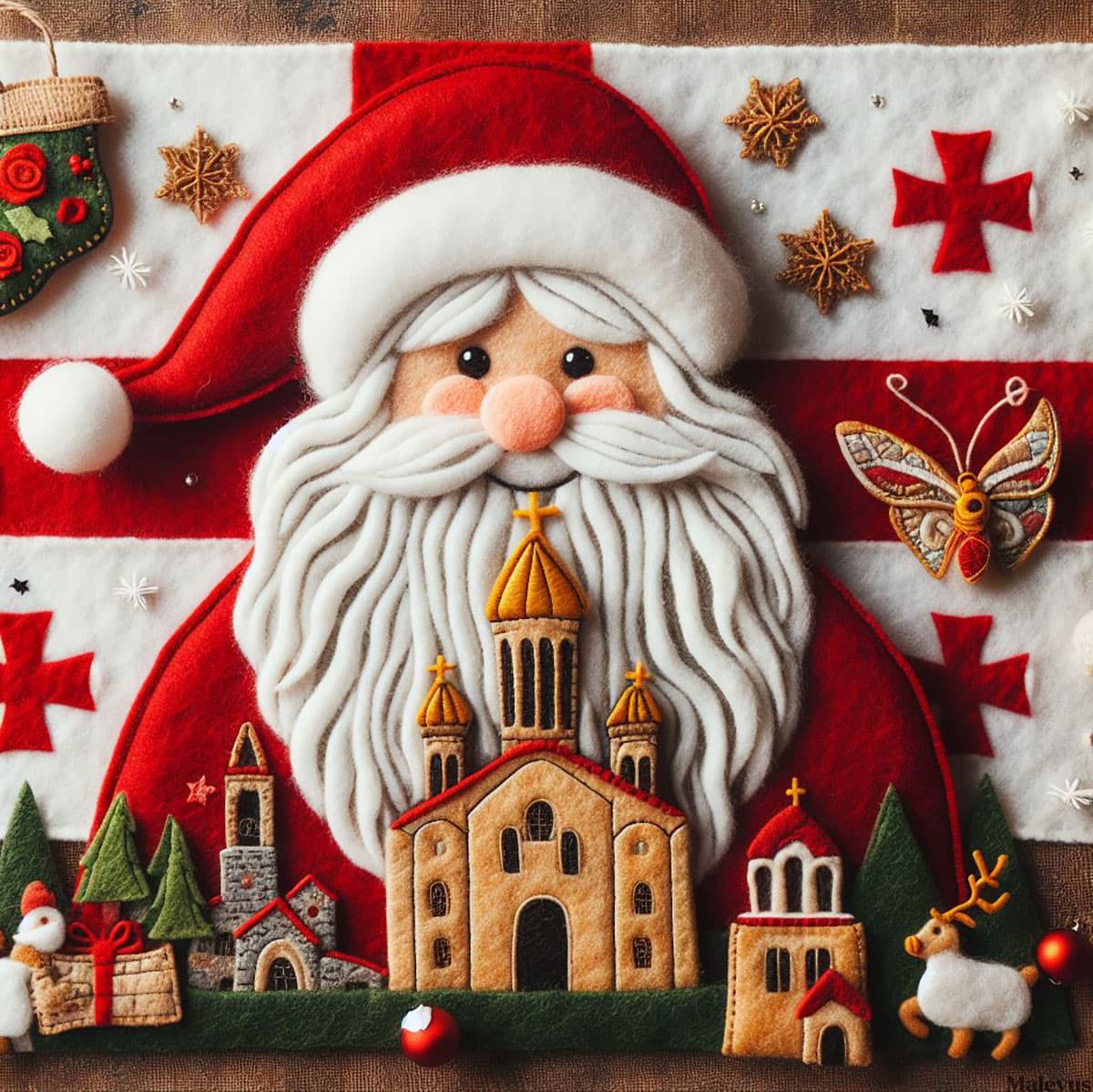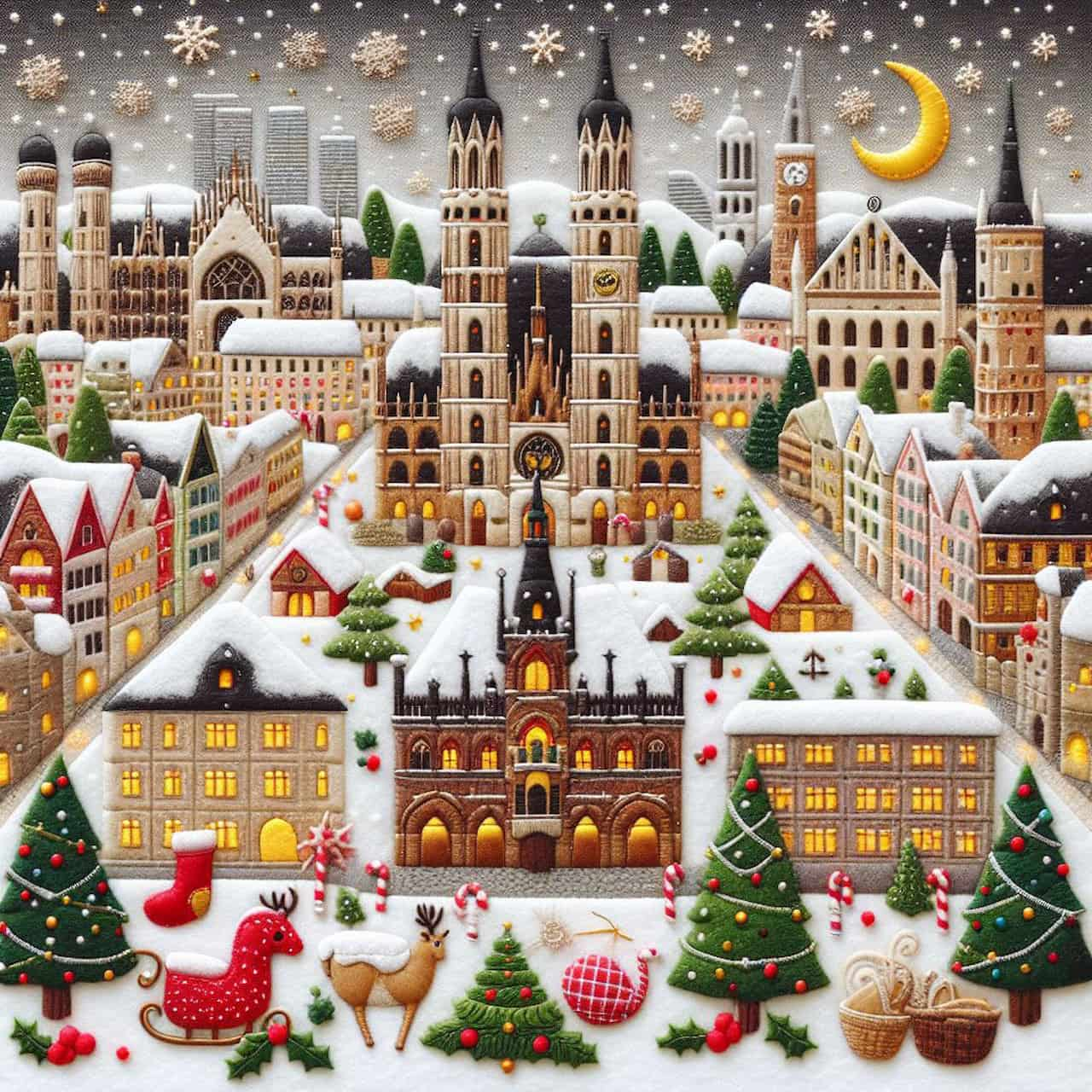In accordance with the ancient Julian calendar used by the Georgian Orthodox Church, the celebration of Christmas in Georgia takes place on January 7th. Tovlis Babua, the Georgian Santa Claus, starts the celebrations on December 31st by bringing sweets and goodies to the youngsters. A large number of people take part in the “Alilo” procession on Christmas Day, during which they sing hymns and carry banners, crosses, and icons. Dried wood adorned with little fruits and sweets is the traditional “Chichilaki” Christmas tree in Georgia. Hospitality, cheer, and feasts characterize this time of year.
-> See also: 48 Countries That Celebrate Christmas Widely
Christmas Traditions in Georgia
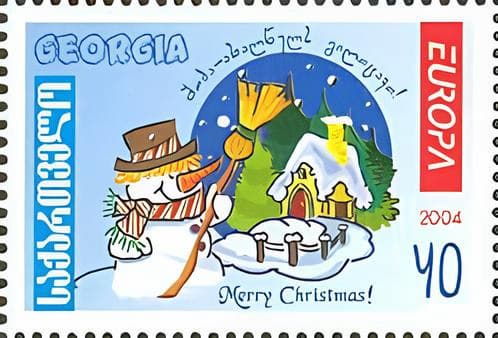
Orthodox Christianity makes up more than 83% of the population in Georgia. Christmas is observed on January 7th in Georgia. Among the most important customs and festivals in the country are as follows:
- Alilo: The Alilo is a Christmas Day parade when participants wear elaborate costumes in a show of celebration. Georgian flags or costumes depicting Nativity scenes might be among their belongings. During the ceremony, sweets are distributed, and Georgian children are invited to join.
- Chichilaki (Georgian Christmas Tree): This is the classic Georgian Christmas tree fashioned from dried branches of hazelnuts or walnuts. You can make a smaller tree out of them by shaving them into long, curly strips and then decorating it with fruits and candies. On the eve of the Georgian Orthodox Epiphany, which falls on January 19th, they are burned as a symbol of the year’s end woes.
- Tovlis Papa: On New Year’s Eve, a jolly old man named Tovlis Papa visits homes to deliver gifts. White garments, a hat, and a “nabadi” (a kind of cape) make up his attire.
- Nadzvis Khe (Western Christmas Tree): Along with the Chichilaki, the Western Christmas Tree (Nadzvis Khe) is also a popular choice for New Year’s Eve (December 31) decorations and lighting in Georgia.
- Family Feast: Christmas Eve is not complete without a feast, and the Georgian bread known as Khachapuri is made with unique ingredients for this family occasion.
- New Year’s Celebrations: Georgians celebrate both New Year’s Eve (December 31) and Old New Year’s Eve (January 13) as part of their new year’s celebrations. The night before Christmas Eve, the households gather to make food and decorations.
- Bedoba: Bedoba is a celebration with loved ones that is said to influence the course of next year in Georgia.
Alilo: The Georgian Christmas Singing
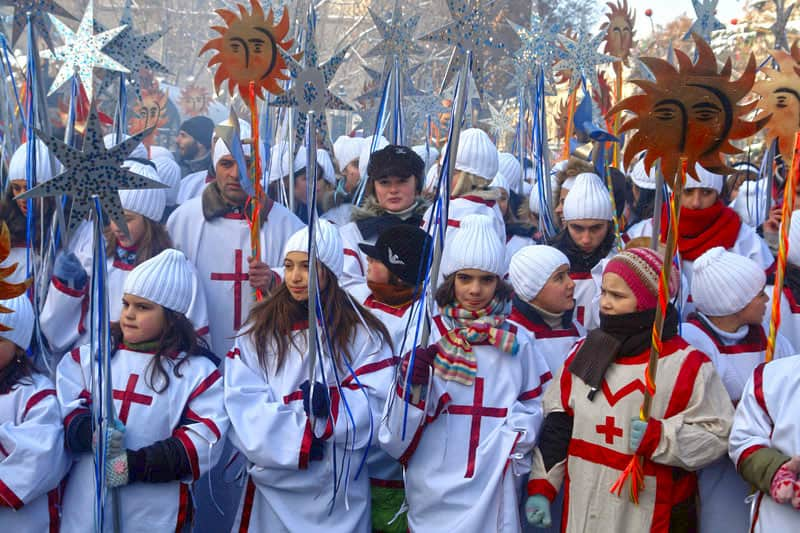
Alilo is a Georgian traditional song that is traditionally concluded on Christmas Eve. The practice involves a group of at least three, forming a three-part harmony and visiting each family to extend holiday greetings through the song. As a token of appreciation, the host would gift the singers an egg, symbolizing life and fertility. The lyrics of Alilo, such as “On the twenty-fifth of December,” “The bird sat on the fence,” “I gave bread to the miller,” etc., convey wishes for health, happiness, and prosperity.
Similar traditions exist in Western European countries; for instance, in the English-speaking world, the practice aligns with “trick-or-treating,” associated with Halloween and occurring on October 31. This tradition bears resemblance to the Georgian Alilo, as children dressed in masquerade costumes go door-to-door, singing and requesting sweets from hosts.
The tradition of Alilo was widespread across Georgia, and each region had its own unique rendition. Rooted in a pagan melody, the term “Alilo” appears to have been derived later from “Alleluia.” It is suggested that the collective name for Christmas and Easter carols might have originally been Chona. The Alilo tradition in Georgia holds a long history, interrupted only once during the Sovietization of Georgia. In 1990, Ilia II of Georgia (Patriarch of Georgia) reinstated this cultural practice. Today, Alilo is observed after the feast’s liturgy (worshipping), with parishioners participating in the procession.
Tovlis Papa (Santa Claus) in Georgia
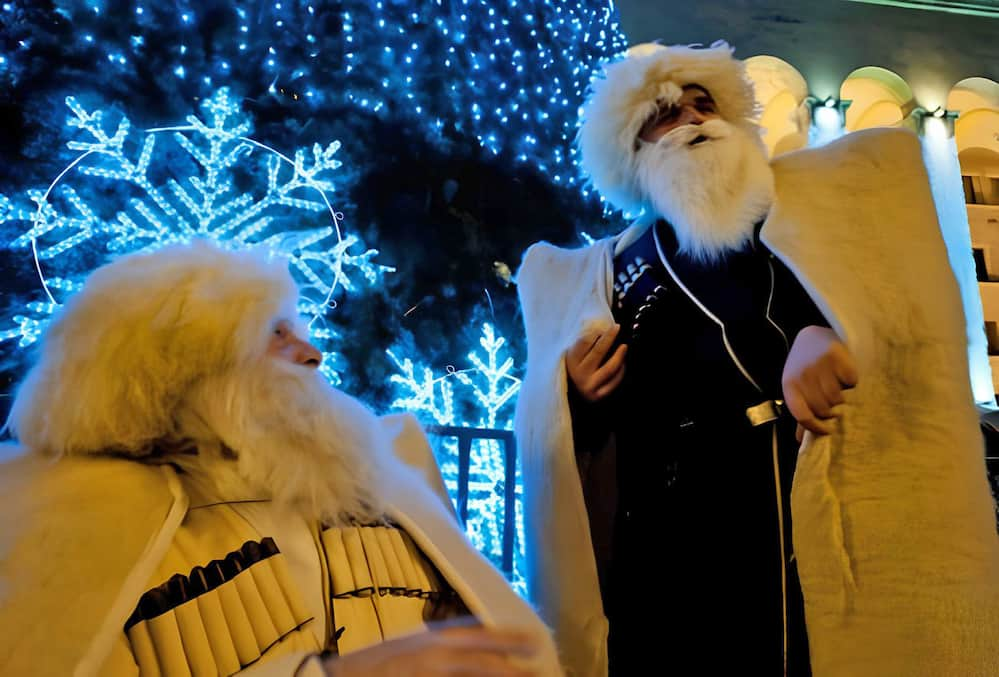
For Georgians, Tovlis Babua—or, in the east, Tovlis Papa—is the central figure of the New Year’s celebration. “Father Snow” is the literal translation of the name. He supposedly comes from the Svaneti village of Ushguli. Hence, a white burka and a Svan cap are typical garments for him to wear.
On New Year’s Eve, Tovlis Papa is said to provide gifts to kids. He frequently makes his appearance as the kids outside are watching the midnight fireworks. Tovlis Papa, in contrast to the red-suited Western Santa Claus, wears nothing but white—a cap and the nabadi, a traditional Georgian sheep-wool robe. Decorative bells adorn his bag of sweets, the khurjini, which he slings over his shoulder.
According to legend, every kid in Georgia receives a special gift from Tovlis Papa on New Year’s Eve when he descends from his residence in the Caucasus Mountains and makes a round of the nation, bringing sweets and goodies. The youngsters reciprocate the gift-giving by omitting churchkhela, a traditional Georgian treat made with almonds and dried grape jelly.
Chichilaki: The Georgian Christmas Tree
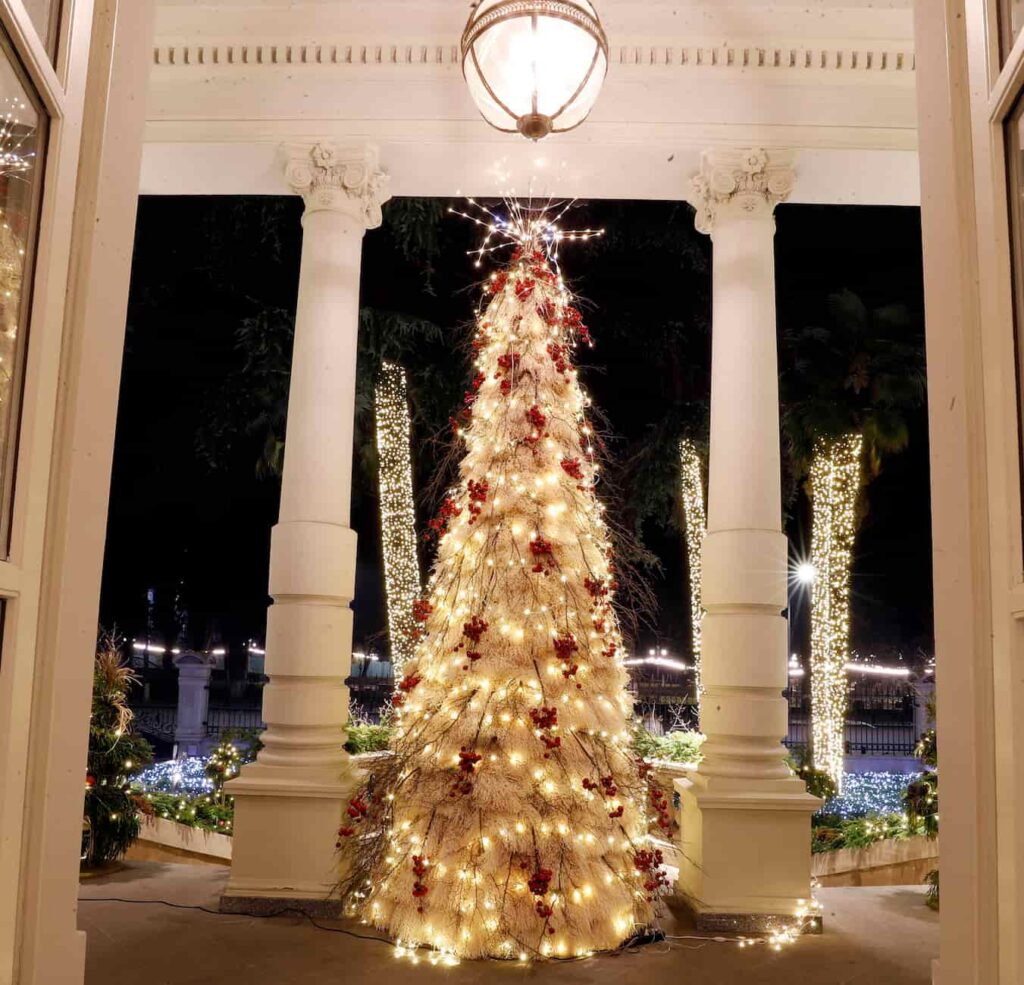
Guria and Samegrelo are two regions in western Georgia where the traditional Georgian Christmas tree Chichilaki was first planted. There is a connection between the tree and the biblical story of the tree of life, as well as parallel stories in Egyptian, Assyrian, and Arianic traditions. When Christianity was officially recognized as the state religion of Georgia in 337 AD, the tree transitioned from its original use as a New Year’s tree to its current status as a Christmas tree. To make the tree, the branches of hazelnut trees are first chopped, then immersed in water in the days leading up to New Year’s Eve, and finally dried in front of stoves.
To create the curled fronds that depict the “rays” that signify the sun, the branches are continuously shaved from below using a specialized knife. These fronds are then left connected at the top. Another story has it that the fronds represent Basil of Caesarea’s beard, who, like Santa Claus, is believed to visit people on Christmas Eve. A ring of reeds was fastened to the summit of Chichilaki in earlier times. A cross, symbolizing the union of pagan and Christian practices, eventually took its place.
-> See also: All 15 Countries That Don’t Celebrate Christmas
Chop branches are used to make chichilaki, which is known for its eco-friendly manufacture. Contrast this with the practice of cutting down spruce trees to make the ubiquitous Christmas trees. In an effort to encourage environmental preservation, the Georgian government has instituted a heavy punishment for the illegal cutting and transportation of pine trees from non-registered farms. In a solemn ceremony that takes place the day before the Georgian Orthodox Epiphany (January 19), chichilaki trees are burned ceremoniously to signify the finality of the previous year’s difficulties.
Bedoba: A Unique Georgian Christmas Tradition
One unique Georgian New Year’s ritual is bedoba and this festival takes place on January 2nd, which is also the second day of the new year. “Bedoba” means “luck” in Georgian, and the traditional belief is that one’s actions on this day will determine the direction of the new year. This is why the Georgian people put extra effort into celebrating this day at Christmas.
Bedoba is celebrated with feasts and quality time with loved ones. The feast, or “supra,” is a crucial aspect of this festival. At this family-oriented celebration, the Georgians raise a glass to the next year and send their best wishes for health, wealth, and happiness. Although Bedoba has nothing to do with Christmas per se, it is a part of Georgia’s holiday season that also includes the Georgian Orthodox Christmas celebration on January 7th.
Christmas Foods and Drinks in Georgia
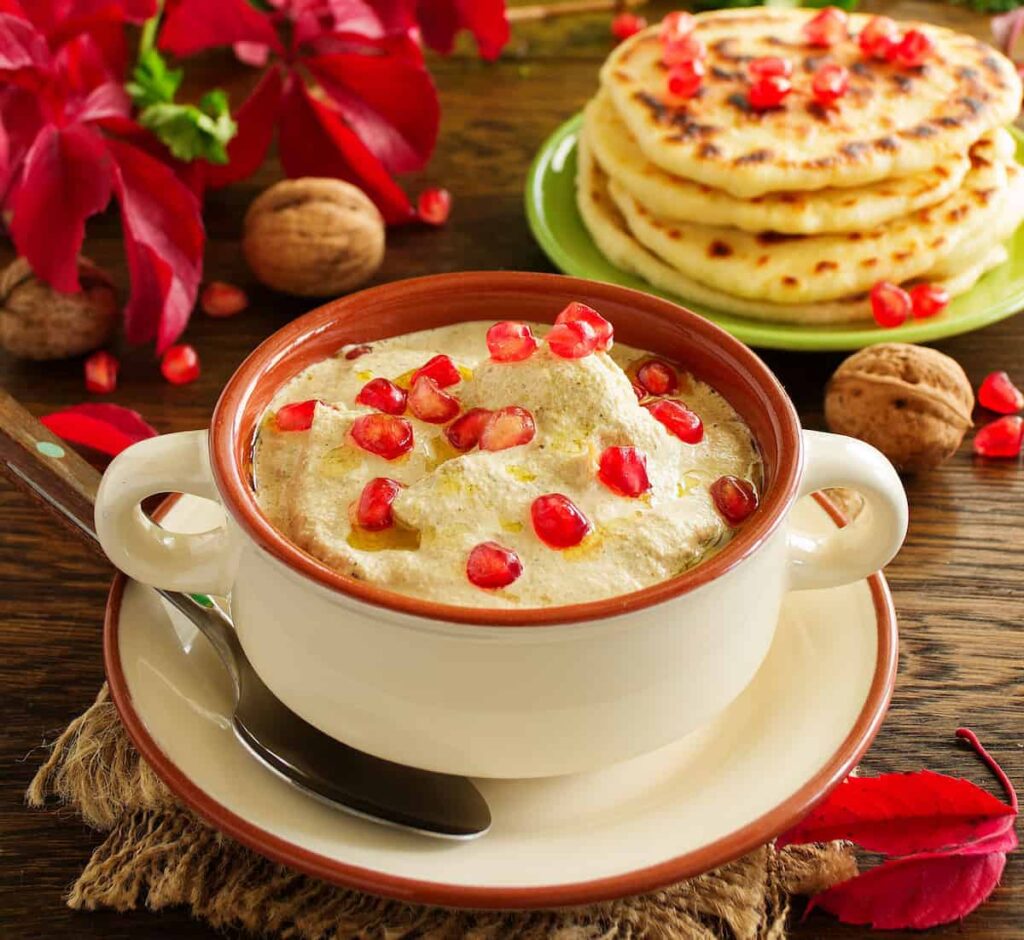
Traditional foods and family get-togethers are part of the Georgia Christmas season, and the following are examples of traditional Georgian holiday foods and beverages:
- Satsivi: It is a boiling turkey stew with walnut paste, garlic, spices, and herbs. Typical gatherings and feasts include this meal as either a starter or a side dish.
- Khachapuri: A classic Georgian flatbread stuffed with a variety of fillings, such as spinach, cheese, or ground beef. It’s a hit all year but Christmastime is when the Georgians really get into this dish.
- Mtsvadi: A tasty meal popular during Christmas festivities; it is skewered pork grilled over an open fire.
- Nigvziani Badrijani: It also known as Eggplant Walnut Rollups, is a delicacy that combines eggplant and walnuts, which are wrapped and cooked until they become crispy.
- Pkhali: Spinach walnut dip with pomegranate combine three ingredients and it goes well with crackers and toast.
- Churchkhela: Georgians enjoy churchkhela, a confection made with grape juice and walnuts, during the holidays and new year’s festivities.
- Gozinaki: Georgians also love to indulge in gozinaki at Christmas, a honey walnut candy.
- Wines: As an addition to Christmas festivities, Georgians also enjoy handmade wines.
Places to Visit in Georgia at Christmas
There are wonderful spots to visit in Georgia to celebrate Christmas, and the land is stunning. Here are a few of the most visited sites:
- Tbilisi: During the Christmas season, Tbilisi—Georgia’s capital city—becomes a wonderful location to visit because of the abundance of cathedrals and churches that put on various activities, lights, and decorations, making the city seem like a party.
- Batumi: One of the well-liked places to spend Christmas is the Georgian seaside city of Batumi. Concerts, fairs, and fireworks displays are a few of the events and activities that take place across the city while it is decorated with Christmas trees.
- Mtskheta: Near Tbilisi is the ancient city of Mtskheta, which is good for anyone seeking a taste of traditional Georgian Christmas thanks to its old churches and monasteries.
- Bakuriani: One of Georgia’s most famous ski resorts, Bakuriani is a holiday destination for snow sports enthusiasts. There are fun things to do, including skiing, snowboarding, and sledding under the Christmas lights and trees.
- Signagi: Visit the picturesque village of Signagi in eastern Georgia this Christmas if you’re a fan of traditional Georgian food and wine. There are restaurants and wineries to peruse.
- Gudari: If you’re a fan of winter sports, this Georgian ski resort is also a good Christmas getaway.
- Borjomi: Located in central Georgia, this spa town focuses on relaxation and breathtaking scenery. Spas and natural springs abound, and the town is full of Christmas lights and trees.
History of Christmas in Georgia
Until the year 377, in the eastern domain of Christianity, Christmas coincided with Epiphany on January 6, aligning with the tradition preserved in the Apostolic Church of Armenia. However, under the guidance and teachings of John Chrysostom, the observance of Christmas was separated and shifted to December 25. Scholars of that era, such as Gregory of Nyssa and Augustine of Hippo, contended that Christ’s birth occurred on the day of the winter solstice—December 25—precisely when the sun and the earth initiate their proximity.
In 1923, under the leadership of Christophorus III, the Georgian Church made its initial attempt to introduce a new calendar. Consequently, the new-style calendar was implemented from 1923 to 1925, yet this endeavor proved unsuccessful due to the populace’s lack of insight. On June 24, 1927, during the holy synod of Ambrosius of Georgia, a decision was made to recognize the new style of celebrating Christmas on December 25th.
The ecclesiastical court’s decision was only applicable to the adherents. On September 28, 1928, the holy synod of the Catholicos of the Georgian Church acknowledged the temporary observance of the new date. The decision urged the clergy to engage in propaganda for the future adoption of the new calendar.


